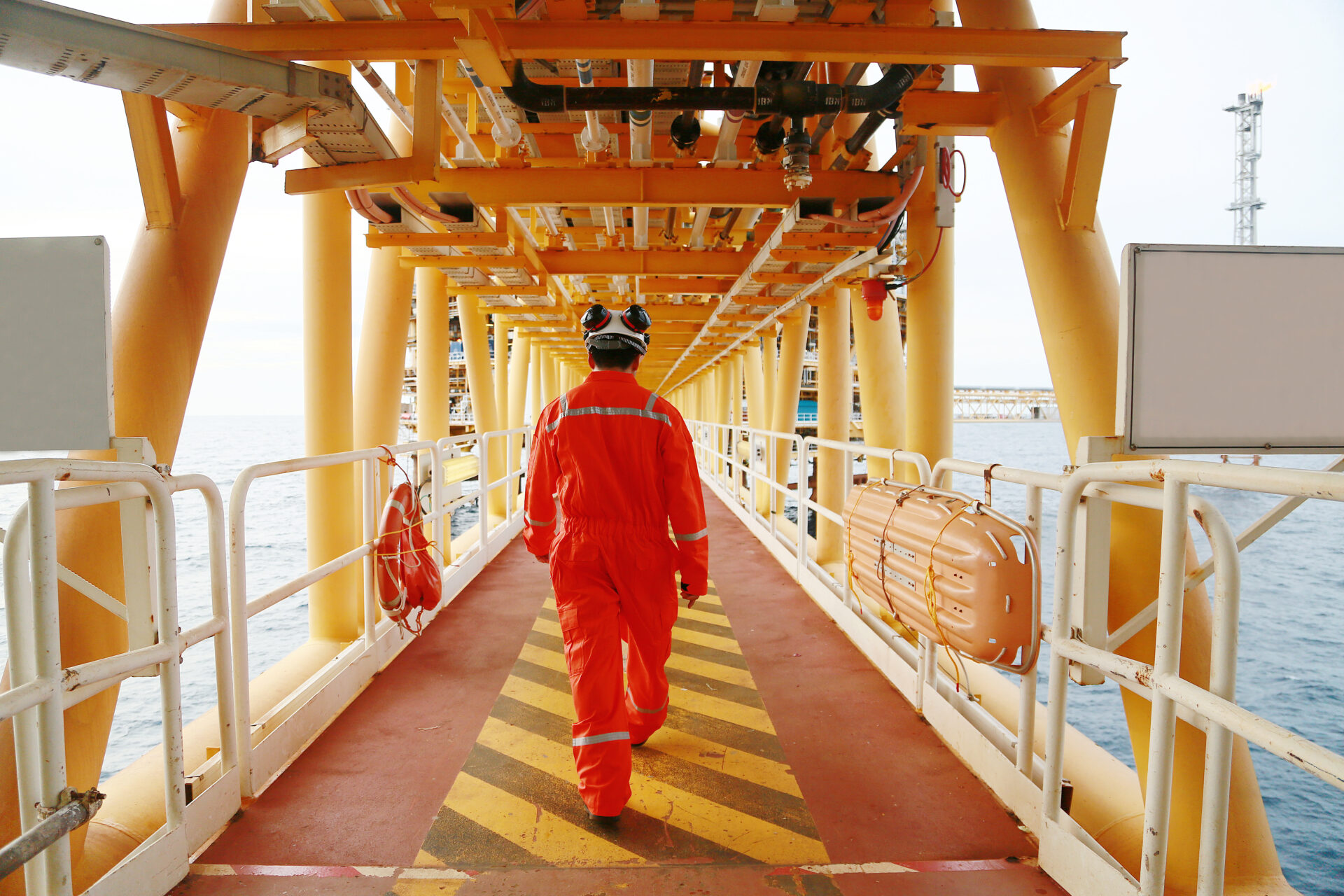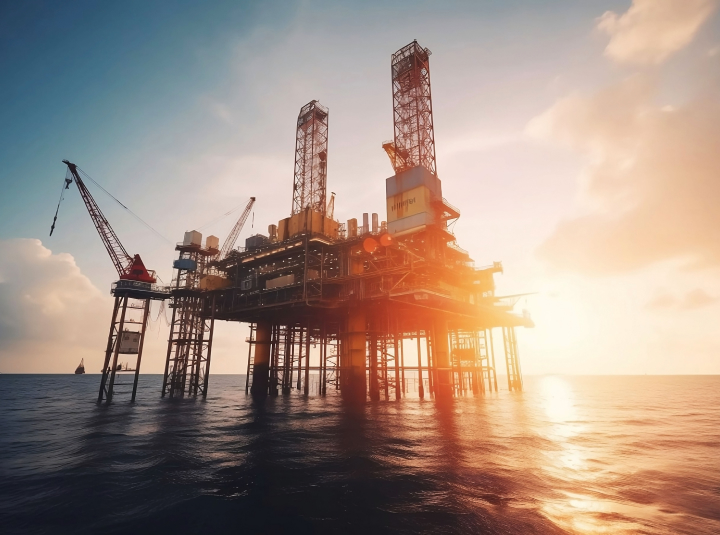Offshore oil rigs are some of the largest human-made structures in the world. Reaching down to around 30,000 feet, many of these rigs would put the world’s tallest buildings to shame. Furthermore, since many people live and work on these giant platforms for months on end, offshore oil rigs have garnered the nickname floating cities. We’ll help break down some interesting facts of these massive structures.
The Dynamics of an Offshore Oil Rig
On the inside, these platforms look a lot like ships. The rooms are smalls, and the recreation areas are sparse. There isn’t a lot of free time, given the long working hours.
The platforms are relatively self-sufficient. Crew members produce water and electricity on board.
The oil platform is also only a small component of the structure. There are usually hundreds or thousands of feet of undersea drilling equipment. The tallest platform in existence is the Petronius platform, almost 600 meters undersea. In fact, until 2010, this made it the tallest free-standing structure in the world.
They Need Platform Supply Vessels to Survive
Usually, oil makes its way from the rigs to shore through an undersea pipeline, so there isn’t the need to transport oil from the platform to shore. However, the platforms do need to be frequently replenished with supplies. This encompasses food and operational supplies like drilling instrumentation and equipment. This is generally the job of platform supply vessels, which are essentially mini short-range flexible cargo ships.
Contact Instruments is Canada’s only OEM Drilling Instrumentation Manufacturer. For more information on our products, please reach out to us.
Floating Cities Require a Lot of Planning
Onboard, there are three types of jobs. The production team administers the extraction and processing of oil. Next, the maintenance team oversees keeping the facilities and equipment in working order, while the service team cooks and cleans for the rest of the crew. Oil companies also try to minimize the number of people working on board as much as possible. It’s expensive to transport and supply these workers, and their salaries are significantly higher than onshore oil workers. Therefore, most operational decisions are made by management inland, while the workers on the platform are strictly functional.

Types of Offshore Oil Rigs
Offshore oil rigs can drill for miles into the bottom of the sea to access oil reserves and then process the raw material into refined product. Oil producers require oilfield equipment, such as drilling mud pumps, clipper weight indicators, and other tools, to assist the offshore oil rigs’ drilling process.
Currently, there are 1,470 offshore oil rigs in operation around the globe. Here are a few of the most notable types:
Submersibles
These are pontoon-like floating structures that can ballast and de-ballast to anchor, re-float, and re-position. The submersible structure allows such oil rigs to reach into deep oil sites, and that’s why they’re a famous choice in the oil drilling industry. The ability to drill in the deep sea and maintain stability during turbulent weather makes it a reliable option for offshore oil companies.
Semisubmersibles
These are mobile offshore drilling units (MODUs) used for offshore drilling in remote, ultra-deep sites at sea. MODUs are known as “semisubmersible” because the platform is partially submerged in water while the drilling operation is underway. Once the drilling is complete, the rig is held in position by anchors that can sustain 10+ tons of weight.
Fixed Platforms
This structure is built with massive steel or concrete support legs launched onto the seabed and firmly fitted. A steel tubular framework known as the jacket is attached to the platform to assist production plants, drilling equipment, and living quarters for the miners. There’s also a movable substructure that contains multiple directional wells drilled from the platform with the rig’s support. Fixed platform oil rigs are a permanent solution for long-term industrial uses, owing to their stability.
Jackup Rigs
Such offshore oil rigs are used for shallow wells that don’t require deep drilling. Jackup rigs come with a platform that’s temporarily fixed over the seafloor. Since it comes without support pillars, it’s towed to the drilling point and rested on the sea bottom. The platform stays above the surface of the water, unlike a floating barge. The system is more stable than the floating oil rigs and can drill as deep as 100 meters.
Drill Ships
They’re the most widely demanded drilling rigs in the oil extraction industry. They consist of a maritime vessel with drilling equipment attached to it. The drilling apparatus is mounted in the vessel’s center above a reinforced hole through which the drilling string is lowered.
Since drillships are a complete oil rig with a marine structure fitted with drilling apparatus, they minimize supply trips and operate in remote areas. They offer increased depth and mobility, which allows oil companies to extract more in a day. However, this type of offshore rig may be less durable than regular semi-submersible ones.

What It’s Like to Work on an Offshore Oil Rig
With 30 percent of global oil production generated by offshore drilling, offshore oil rigs are a major source of crude oil production across the world. Over the last decade, offshore rig activity has gradually increased, leading to a greater demand for skilled technicians on these platforms.
Offshore oil rigs demand long, tedious hours, and the work is often physically and mentally challenging. But it’s also highly rewarding for ambitious professionals who are looking to build a lucrative career in the industry.
Here are some insights about life on an offshore oil rig.
Before You Leave
Working on an offshore oil rig requires high levels of physical and mental endurance. Most oil rigs operate round the clock, and even though work is divided into shifts, each shift can last 12 years or more.
Even when applying for lower-level jobs, you need to be at least 18 and have a high school certificate. Given that drinking and smoking are prohibited on oil rigs, candidates without these habits are preferred.
Physical fitness is an essential component, especially for those just starting out. Moving heavy machinery and carrying loads is a part of the job description. Mental endurance is also critical, as most employees stay on the rig for two to four weeks on average. The time spent away from family while being restricted to the platform can take a toll on some workers.
When you first start work at an offshore oil rig, you’ll be required to take the Basic Offshore Safety Induction and Emergency Training Course or BOSIET. This course must be taken before you reach the platform and teaches participants about the basic survival skills needed offshore.
Working on an Offshore Rig
Working on an oil rig for two to four weeks at a time requires planning. Make sure your family and/or emergency contacts know where you are and how to reach you in case of an emergency. Mentally preparing yourself is also important, as the first few weeks can be particularly tough.
Living conditions
Space on offshore oil rigs is often limited, so you can expect to live in close quarters with other personnel. As such, it’s essential to respect other personnel’s space and keep your area tidy.
Many modern oil rigs offer various amenities, such as gyms, TV, and pool tables, so users can relax and unwind after a tough day. Many people are also surprised to find that the food on offshore rigs is quite good. Fresh items are flown in regularly and meals are prepared multiple times during the day.
Offshore Oil Rig Jobs
Given that working on an offshore oil rig opens up a lot of opportunities for growth and development in the industry, there’s definitely some healthy competition for vacancies on offshore jobs. Additionally, these jobs also pay better than onshore oil rigs. If you display talent and are committed to the job, you can quickly rise up the ranks to more lucrative positions.

The Worst Offshore Oil Rig Disasters in History
Over the last several years, studies have shown that oil extraction is now safer than many occupations, including agriculture and nursing. However, oil extraction is still quite dangerous and can lead to offshore oil disasters. After all, workers are usually on shift for 12 hours a day, working with highly combustible material. A mishap can lead to severe loss of life and have economic and environmental ramifications. Throughout history, there have been several oil spills that made the headlines. Here are a few examples:
Piper Alpha, North Sea
The Piper Alpha Oil Rig was located 120 miles northeast of Scotland. The rig was one of the largest and most successful oil rigs producing more than 300,000 barrels of crude oil every day.
On July 6, 1988, the Piper Alpha fell victim to disaster. The pump’s pressure safety valve was removed a few hours earlier and temporarily sealed with two blind flanges. The pump was not supposed to be turned on in any situation.
However, due to communication errors, a member of the night staff turned it on. The corresponding gas leak led to an explosion on the platform killing 167 people.
Ocean Ranger, Canada
This disaster occurred off the coast of Newfoundland on February 15, 1982, killing all 84 crew members on board.
The mobile offshore drilling rig was working on an exploration well at the Hibernia field when it overturned in the water due to a severe storm. Though crew members abandoned the rig and attempted to evacuate through lifeboats, none were able to launch successfully.
Usumacinta Jack-Up Disaster, Gulf of Mexico
On October 23, 2007, the Usumacinta Jack-up collided with the PEMEX-operated Kab-101 platform in the Bay of Campeche. The collision caused an oil and gas leakage, where two of the safety valves had to close.
However, crew members were unable to close the valves, which only exacerbated the leakage. Eventually, the rig platform caught fire, and the crew had to be evacuated. 21 people were killed during the evacuation.
Preventing Offshore Oil Rig Disasters
Many offshore rig disasters, including the above, could have been avoided with safe and secure drilling instrumentation. At Contact Instruments, our products include torque gauges and systems, weight indicator systems, temperature transmitters, transducers (and more), all of which meet the highest safety standards.
Contact Instruments is a leading manufacturer of OEM drilling instrumentation in Canada, providing reliable, premium-grade drilling equipment. From mud pressure gauges and custom cables to clipper weight indicators, we are a one-stop solution for high-quality equipment.
